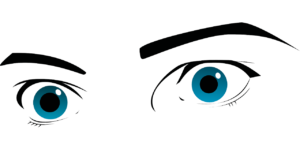Now You See It [Show Notes]

Occipital Lobe Review
A brain lesion is a place in the brain that doesn’t fire when it should or fires sporadically when it shouldn’t. Occipital lobe lesions can lead to hallucinations that range from amorphous to extremely detailed.
Field blindness: a lesion causes the occipital lobe to not translate the information from one or more spots of the visual map (your whole view). Blind spots (round) or visual cuts (lines).
Photosensitivity seizures: seizures triggered by visual overstimulation. Even though stereotypical in different forms of entertainment, these only accounts for about 10% of seizure triggers. Seizures triggered by visual stimulation can range from mild to severe.
Certain types of blindness can be rooted in translation problems in the brain, rather than reception problems in the eyeball.
Lesions in the occipital-temporal-parietal junction:
- Color agnosia: can see the colors but can’t recall the names; simplified colors (all greens appear to be the same green)
- Movement agnosia: think weeping angels (things only move to a new position when you’re not looking at it) or moving items appear blurry
- Agraphia: unable to communicate in writin
Connect with me
Support us on Patreon
*NEW* Join the Pharmacist Answers Podcast Community on Facebook
Subscribe: iTunes, Stitcher, GooglePlay, TuneIn Radio
Music Credits: “Radio Martini” Kevin MacLeod (incompetech.com) Licensed under Creative Commons: By Attribution 3.0 http://creativecommons.org/licenses/by/3.0/

